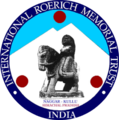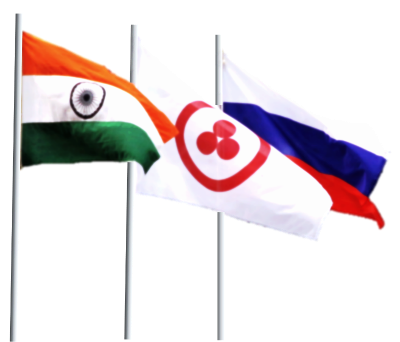07.06.2024
Harmony of colour and form in the art of Ankush Atthi
Ankush Atthi is a professional teacher. He perceives his mission as one of awakening the younger generation's love for their native nature and cultural heritage through his paintings. He also strives to preserve these for future generations, ensuring that any disturbance to the delicate balance between humanity and the natural world is avoided. The artist's work, his teaching, and his contributions to Indian culture have been duly acknowledged with state awards and letters of appreciation.
The majority of the exhibited works are devoted to the Himalayas, their natural environment and cultural heritage. The artist hails from the region of Punjab situated in the foothills of the Himalayas, a location that undoubtedly fosters a profound admiration for the snow-capped peaks and picturesque valleys that characterise the region. Although watercolours are characterised by transparency and lightness, which may not always allow the full range of colours found in the Himalayas to be conveyed, Ankush Atthi's work succeeds in capturing the natural combinations of tones through his skill and the special and complex technique of layered watercolour.
A significant aspect of the artist's oeuvre is the depiction of sacred sites and shrines in India and Nepal. The exhibition presents works depicting the sacred mountain Kinnor-Kailash, Buddhist stupas, and Hindu temples of northern India, including Kedarnath and Tungnath. In addition to the images of imposing mountains, the exhibition features detailed reliefs of temples. These depict sculptural images of Ganesha and statues of Buddha, which gaze at the viewer. The artist has captured the texture of the depicted surfaces and the play of light and shade in watercolours with remarkable skill.
The majority of the smaller-format works exhibited were created by the artist during the period of the pandemic, when travel was not possible. The artist employed his own imagination or photographic sources to create these works. For him and his students, the act of painting captivating corners of India or fictional landscapes became a cathartic outlet during these challenging times.
On 7 June, the Exhibition Hall of the International Roerich Memorial Trust in Naggar hosted the inauguration of the solo exhibition of Punjabi artist Ankush Atthi. This is not the first occasion on which the artist has exhibited his work at the Trust. Mr. Suresh Kumar Nadda, an Indian Curator, IRMT and his colleague Mrs. Larisa Surgina, a Russian Curator and employee of the ICR, who were present at the opening, recalled Ankush's previous exhibitions with great warmth.
The artist's realistic paintings of various animals and birds, the majority of which are endangered and in need of protection, are particularly moving. The multi-layered technique employed by the artist allows the images to appear surprisingly three-dimensional, as if embossed on the surface of paper. Once more, this is not a translucent, haze-covered, muted watercolour; it is a clear and dense colour, reminiscent of acrylic paints, yet still exhibiting the fluidity and softness characteristic of watercolour.
The inauguration of the exhibition was conducted in a touching familial atmosphere. In addition to the IMTR staff and its esteemed curators, the artist expressed his gratitude to his family, specifically his wife, her parents, and her brother, for their invaluable contributions to his work. The artist's numerous projects, which have been honoured with awards and letters of appreciation, would not have been possible without the support of his family. The harmony from which true art originates begins in the family circle.
The attendees of the exhibition had the opportunity to appreciate the artist's creative use of colour, form and content. The artist's imaginative approach to his work, evident in the paintings on display, was achieved through a combination of skill and simple, accessible tools.









































